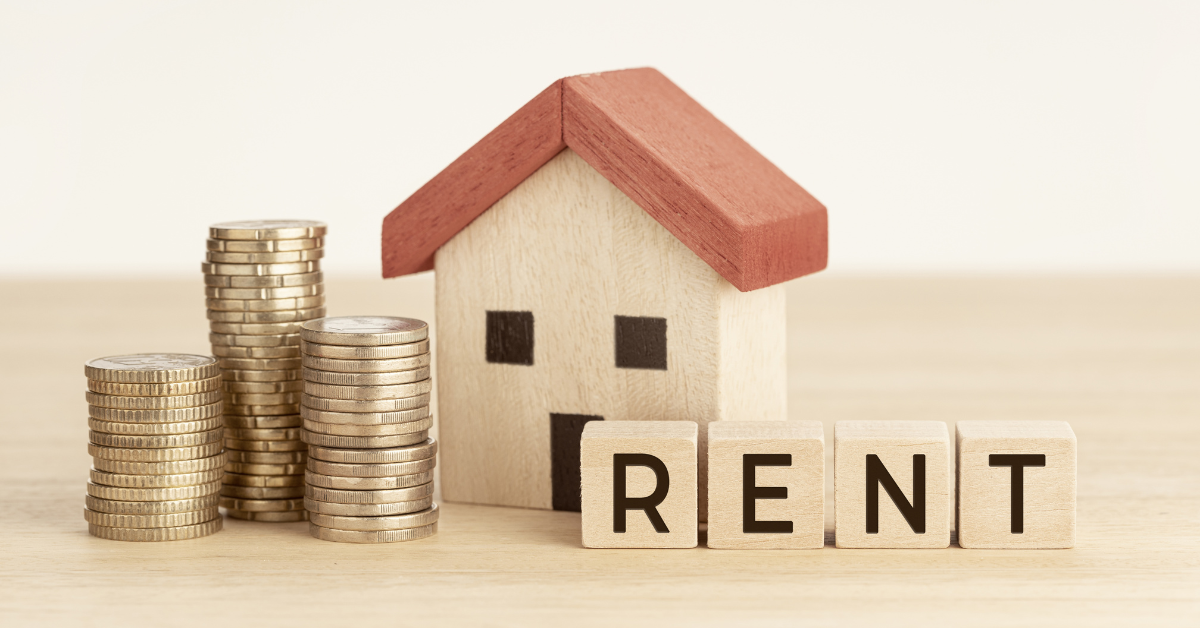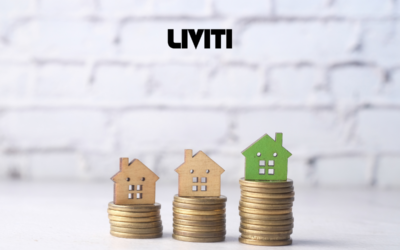To achieve financial freedom or secure generational wealth in mind, having well-thought-out property investment strategies is crucial for reaching your investment aspirations. In this guide to property investment strategies, we examine the critical factors every property investor should ponder before launching on building their property portfolio.

Real estate investment is a long-term endeavour with the potential for significant gains, but it also carries inherent risks tied to market conditions, property types, locations, and timing.
Understanding the intricacies of property investment strategies can pave the way for successful growth in rental income. From buying and holding to property selling and subdivision, there are various approaches investors can take to optimise their returns.
By exploring different property types and considering market trends, investors can make informed decisions to align their strategies with their individual goals and risk tolerance levels.
1. Buy and Hold
One of the most commonly used property investment strategies is the ‘buy and hold’ approach. This strategy involves purchasing a property, ideally at a price below market value, and holding onto it for an extended period while renting it out to cover mortgage costs and other expenses.
The main goal of the buy-and-hold property investment strategy is to build equity in the property over time, taking advantage of potential capital growth. Investors may choose to sell the property later on for a profit once its value has increased significantly.

Property investors using this strategy may opt for negative gearing, where rental income does not fully cover expenses, allowing for tax benefits through deductions. Alternatively, they may focus on positive cash flow properties to generate surplus rental income to cover costs.
2. Positive Gearing
The concept of positive gearing is a good strategy in the world of property investment. It involves ensuring that the rental income generated from your property exceeds all of your property ownership expenses, such as mortgage repayments, insurance, maintenance costs, and property management fees.
When a property is positively geared, it means that you are making a profit from your investment property each month. This additional income can be a valuable source of passive income to bolster your financial portfolio and help you achieve your investment goals.

Positive gearing is particularly attractive to investors who are seeking immediate returns and want to supplement their income. By carefully selecting properties that are likely to attract High Rental Yields relative to the property’s purchase price, investors can maximise their cash flow and build wealth over time.
It’s important to note that positive gearing is not without its risks. Changes in the rental market, unexpected expenses, or periods of vacancy can impact your ability to maintain a positively geared property. Therefore, conducting thorough research, selecting the right location, and ensuring your property is well-managed are crucial steps in implementing a successful positive gearing strategy.

While positive gearing can be a lucrative investment strategy, it is necessary to consider your individual financial goals, risk tolerance, and market conditions before plunging into this approach. By carefully assessing your investment objectives and working with experienced professionals, you can leverage positive gearing to build a robust and profitable property portfolio.
Feeling overwhelmed? Don’t worry. Consult a Property Expert who can expertly guide you through every step of the process.
3. Negative Gearing
Clearly, one of the most common property investment strategies utilised by investors is negative gearing. This strategy involves purchasing a property, typically financed through a loan, where the rental income is less than the expenses associated with owning the property. The shortfall, or “negative” cash flow, can be offset against the investor’s taxable income, potentially resulting in a tax deduction.
Investors who opt for negative gearing are often willing to accept short-term losses in the hopes of long-term capital gains. While the strategy can provide tax benefits and the potential for property value appreciation, it is important to carefully assess the risks involved. Fluctuations in rental income, interest rates, and property market conditions can impact the profitability of negatively geared properties.

It’s crucial for investors considering negative gearing to conduct thorough research, seek advice from Financial Professionals, and develop a solid financial plan. Understanding the intricacies of negative gearing and its implications on cash flow and tax obligations is crucial for making informed investment decisions.
Read this comprehensive guide – Top 10 Property Investment Strategies (2024)
4. Building For Profit
Some property investors choose to focus on building properties for profit in the long run. By strategically developing and constructing real estate assets, investors can create value and generate substantial returns over time.

For a comprehensive look at various real-estate building strategies aimed at long-term wealth accumulation, I recommend exploring the 10 Real Estate Investing Strategies for Long-Term Wealth guide. After reading this comprehensive guide, you’ll explore advanced techniques and tactics that can help you as an investor maximise your returns through strategic property development.
5. Co-living Home
This strategy involves purchasing a property with multiple units or bedrooms and living in one unit while renting out the others.

By strategically renting out the additional units or rooms, you can generate rental income that helps offset your mortgage or even covers it entirely. This can significantly lower your cost of living and accelerate your journey towards financial freedom.
Co-living can take many forms, from buying a duplex and renting out one unit to purchasing a single-family home and renting out individual rooms. The key is to maximise rental income while minimising your own living expenses.
Additionally, the co-living strategy can provide valuable experience in property management and landlord responsibilities, setting you up for future success in real estate investing. With careful planning and execution, co-living can be an amazing strategy with little income or a low budget.
6. Short Term Rentals
Your property investment strategy should ideally include a mix of short-term and long-term rentals to maximise your potential for future rent growth. Short-term rentals, also known as vacation rentals or Airbnb rentals, can offer higher rental yields compared to traditional long-term rentals. These rentals are typically rented out on a daily or weekly basis, making them a popular choice for investors looking to generate quick returns.
When considering short-term rentals, it’s important to research the demand in your specific location. Tourist hotspots or areas with high demand for short-term accommodation are ideal for this type of investment. You’ll also need to factor in additional expenses such as cleaning fees, maintenance costs, and management fees when calculating your potential returns.
Short-term rentals can be more labour-intensive compared to long-term rentals, as you may need to manage bookings, coordinate cleaning services, and handle guest inquiries. However, the higher rental income potential can make it a lucrative investment strategy for investors willing to put in the extra effort.
7. Commercial Investments
Now, let’s probe into the world of commercial property investments. Unlike residential properties, commercial investments involve properties used for conducting business such as office spaces, retail shops, and industrial units. These properties can range from small retail spaces to large office buildings and warehouses.
In the matter of commercial investments, there are different strategies you can employ to maximise your returns. Understanding the dynamics of the commercial property market is crucial, as factors like location, tenant quality, lease terms, and market demand can greatly impact the success of your investment.
If you’re interested in learning more about commercial property investment strategies, check out this Property Investment Strategy – The Ultimate Guide 2023 for comprehensive insights and tips.
8. Consider House and Land Packages:
House and land packages in Australia are a popular investment strategy where buyers purchase a plot of land and new home construction as a single, integrated deal. This approach offers several benefits for property investors looking to build wealth and escape the 9-to-5 grind.
By investing in a house and land package, investors can often secure a new property at a competitive price point, as developers may offer attractive deals to sell multiple packages within a development. This strategy also allows investors to maximise tax benefits through depreciation, as new constructions typically offer higher depreciation rates compared to established properties.

For investors, the appeal of house and land packages lies in their potential for both immediate returns and long-term capital growth. New properties are often more attractive to tenants, which can lead to higher rental yields and lower vacancy rates.
Additionally, as these packages are frequently located in developing areas with planned infrastructure improvements, investors may benefit from significant capital appreciation as the neighbourhood matures. The ability to customise the home design within certain parameters can also add value, allowing investors to create properties that meet current market demands and stand out in the rental market.
To build wealth through this strategy, investors can leverage the equity gained from capital growth to expand their property portfolio. As the property appreciates in value and the mortgage is paid down, investors can potentially use this equity to secure additional house and land packages or other investment properties.
Furthermore, the predictable costs associated with new constructions can help investors better manage their cash flow and plan for future investments. By carefully selecting locations with strong growth potential and aligning property features with target tenant demographics, investors can create a robust, diversified portfolio of new properties that generates consistent passive income and builds long-term wealth.
9. Vacation Rentals
For property investors looking to capitalise on the growing trend of vacation rentals, investing in this sector can offer lucrative returns. Vacation rentals, also known as holiday homes or short-term rentals, involve renting out a property temporarily to travellers looking for accommodation.
One of the key advantages of vacation rentals is the potential for higher rental income compared to traditional long-term rentals. By targeting high-demand tourist destinations or popular travel spots, investors can command premium rates, especially during peak seasons.
However, managing vacation rentals requires more hands-on involvement compared to long-term rentals. Property owners need to handle guest inquiries, reservations, cleaning, maintenance, and ensure the property is in top condition for each guest’s arrival.
Another factor to consider with vacation rentals is seasonality. Depending on the location, demand for vacation rentals may fluctuate throughout the year, with peak seasons being more profitable but potentially leaving the property vacant during off-peak periods.
To maximise the profitability of vacation rentals, investors may consider leveraging online platforms such as Airbnb, or Booking.com to reach a wider audience of travellers.
Creating a strong online presence with enticing property descriptions, high-quality photos, and positive guest reviews can help attract more bookings.
Overall, vacation rentals can be a rewarding investment strategy for property investors willing to put in the extra effort to manage the property and cater to the needs of short-term guests. By understanding the unique dynamics of the vacation rental market and selecting the right location, investors can achieve substantial rental income and long-term growth potential.
10. NDIS Housing
NDIS housing, or National Disability Insurance Scheme housing, is a specialised form of property investment in the Australian real estate market that caters to individuals with disabilities who require modified or accessible living spaces.
This type of housing is designed to meet the specific needs of NDIS participants, offering features such as wider doorways, accessible bathrooms, and other modifications that enhance independence and quality of life for residents with disabilities.
For property investors, NDIS housing presents a unique opportunity to diversify their portfolio while contributing to a socially beneficial cause. The primary benefit of this investment strategy lies in its potential for stable, long-term returns.
NDIS housing typically offers higher rental yields than standard residential properties, as the government often subsidises the rent through the NDIS program. This government involvement provides a level of security for investors, as it ensures a consistent income stream and reduces the risk of vacancy or rental defaults.
The NDIS housing program is closely related to other government-assisted housing initiatives in Australia, forming part of the broader social housing sector. However, it specifically targets the needs of individuals with disabilities, aligning with the NDIS’s goal of providing support and services to enhance the lives of people with permanent and significant disabilities.
The government’s commitment to this sector means that investors in NDIS housing can benefit from various incentives and support mechanisms designed to encourage private investment in this crucial area of social infrastructure.
Investors can build wealth through NDIS housing by capitalising on the combination of steady rental income and potential capital growth. The specialised nature of these properties often means they are in high demand, which can lead to strong capital appreciation over time, especially in well-chosen locations.
Additionally, investors can leverage the stable cash flow from NDIS properties to secure further investments, potentially expanding their portfolio across both NDIS and traditional real estate markets.
By investing in NDIS housing, property investors not only create a robust income stream but also position themselves to benefit from government initiatives and the growing demand for accessible housing in Australia’s aging population.
This strategy allows investors to build wealth while also making a positive social impact, creating a win-win situation in the Australian real estate market.
Which is the Best Strategy to Choose From?
The best property investment strategy varies based on individual goals, risk tolerance, and market conditions. For long-term growth, “Buy and Hold” is widely recommended. However, for those looking for quicker returns, “Short-Term Rentals” might be more appealing. Assessing your financial situation, researching the market, and possibly consulting with a property investment advisor can help determine the strategy that aligns best with your objectives.
Benefits of Investing in Property
Investing in property offers several benefits, including the potential for capital growth, rental income, tax advantages through deductions, and the ability to leverage. Real estate is often considered a stable investment compared to the volatility seen in stock markets, making it an attractive option for building wealth over time.
How to Get into Property Investment as a Beginner?
Start by educating yourself on the basics of real estate, market trends, and investment strategies. Setting clear investment goals and a budget is crucial. Consider starting small, perhaps with a single unit or a low-cost property, to learn the ropes. Engaging with real estate networks, finding a mentor, and possibly working with a property investment advisor can also provide valuable insights and guidance.
Join our FREE get-into Masterclass to learn from successful investors.
Best Places to Invest in Australia in 2024
Emerging suburbs in major cities, areas with infrastructure development, and regions experiencing population growth are typically good investment bets. Cities like Brisbane and Adelaide have been highlighted for their growth potential, alongside regional areas benefiting from the “sea change” and “tree change” trends. Always conduct thorough research or consult with a property market analyst to identify areas with high growth potential.
Read this guide to know the Best suburbs for investment properties to watch in 2024
How to Finance Investment Properties?
Financing options include traditional mortgages, investment loans, and leveraging equity from existing properties. It’s important to shop around for the best loan rates and terms that suit your investment strategy. Consider speaking with a mortgage broker who specialises in investment properties to explore your options.
How to Spot Suburb Growth?
Look for suburbs with increasing demand but limited supply, signs of gentrification, new infrastructure projects, and strong local employment opportunities. Analysing historical price data, rental yields, and vacancy rates can also provide insights into potential growth areas.
Read it for more details- Best Sydney Suburbs for Highest Rental Yield
Are Investment Properties Worth It?
Investment properties can be worth it, offering financial gains through rental income and capital growth. However, they also come with risks such as market fluctuations, interest rate changes, and potential vacancies. Careful selection of property, location, and a well-thought-out investment strategy are key to making property investment worthwhile.
Is Buying an Investment Property Worth It?
Buying an investment property can be a valuable addition to your investment portfolio if done wisely. It can provide a steady income stream and long-term capital appreciation. However, it requires due diligence, market research, and financial stability to handle the upfront costs and ongoing expenses.
What to Look for When Buying an Investment Property?
Key factors include location, property condition, market demand, rental yield, and growth potential. Properties in areas with strong schools, amenities, transport links, and employment opportunities tend to attract tenants and appreciate in value. Assessing the property’s condition and potential maintenance costs is also crucial to ensure profitability.
Conclusion
Following this comprehensive guide on the top 10 property investment strategies for future rent growth, property investors can better understand the various options available to them in the real estate market.
By carefully considering factors such as asset types, investment goals, financing options, and market trends, investors can create a solid investment strategy that aligns with their financial objectives and risk tolerance.
Property investors must conduct thorough research, seek professional advice, and continuously evaluate their investment portfolio to ensure they are on track to achieve their desired outcomes.
Each investment strategy has its own advantages and considerations, so investors must choose the approach that best suits their individual circumstances. With proper planning and a clear strategy in place, property investors can navigate the real estate market with confidence and work towards building a successful property portfolio for future rent growth.
Frequently Asked Questions (FAQs)
Q: What is the importance of having a solid property investment strategy?
A: Having a solid property investment strategy is crucial for achieving financial freedom and setting up future growth opportunities for your investments.
Q: What are the main factors to consider when creating a property investment strategy?
A: Factors to consider include current assets, investment goals, timeframe, budget, financing options, property type, location, rental yields, and management involvement.
Q: How does the buying and holding strategy work?
A: This strategy involves buying a property, renting it out long-term, building equity, and potentially selling for a profit after capital growth.




